Product Name
Cyclo Hexyl Amine
Part Number
RXSOL-19-1286-050
Company Details:
RX MARINE INTERNATIONAL
105, A wing , BSEL , TECH PARK.
VASHI ,NEW BOMBAY 400703 INDIA
Phone
+91 22 65113333 / 5555 / 9999/ 27815540-42
Fax
+91 22 2781 1318 :::AOH :0091 9821214367
Email
123@rxmarine.com/ mail@rxmarine.com/
Website
http://www.rxmarine.com
Component
CAS-No
EC Number
Percentage
R Phrases
Cyclo Hexyl Amine
108-91-8
203-629-0
100 %
10-21/22-34-62
Signal Word
:
I Harmful, Corrosive
Hazard Statements/Potential Health Effects
:
Very hazardous in case of skin contact (irritant), of eye contact (irritant), of ingestion, of inhalation. Hazardous in case of skin contact (permeator). Corrosive to skin and eyes on contact. Liquid or spray mist may produce tissue damage particularly on mucous membranes of eyes, mouth and respiratory tract. Skin contact may produce burns. Inhalation of the spray mist may produce severe irritation of respiratory tract, characterized by coughing, choking, or shortness of breath. Severe overexposure can result in death. Inflammation of the eye is characterized by redness, watering, and itching. Skin inflammation is characterized by itching, scaling, reddening, or, occasionally, blistering.
Potential Chronic Health Effects:
:
CARCINOGENIC EFFECTS: A4 (Not classifiable for human or animal.) by ACGIH. MUTAGENIC EFFECTS: Not available. TERATOGENIC EFFECTS: Not available. DEVELOPMENTAL TOXICITY: Not available. The substance is toxic to the nervous system, upper respiratory tract. Repeated or prolonged exposure to the substance can produce target organs damage. Repeated or prolonged contact with spray mist may produce chronic eye irritation and severe skin irritation. Repeated or prolonged exposure to spray mist may produce respiratory tract irritation leading to frequent attacks of bronchial infection. Repeated exposure to an highly toxic material may produce general deterioration of health by an accumulation in one or many human organs.
Environmental hazards
:
Environmental effects Dangerous for the environment Very toxic to aquatic organisms; may cause long term adverse effects in the aquatic environment.
Eye Contact:
:
Check for and remove any contact lenses. Immediately flush eyes with running water for at least 15 minutes, keeping eyelids open. Cold water may be used. Do not use an eye ointment. Seek medical attention.
Skin Contact
If the chemical got onto the clothed portion of the body, remove the contaminated clothes as quickly as possible, protecting your own hands and body. Place the victim under a deluge shower. If the chemical got on the victim's exposed skin, such as the hands : Gently and thoroughly wash the contaminated skin with running water and non-abrasive soap. Be particularly careful to clean folds, crevices, creases and groin. Cold water may be used. If irritation persists, seek medical attention. Wash contaminated clothing before reusing.
Serious Skin Contact
Wash with a disinfectant soap and cover the contaminated skin with an anti-bacterial cream. Seek immediate medical attention.
Inhalation
Allow the victim to rest in a well ventilated area. Seek immediate medical attention.
Serious Inhalation
Evacuate the victim to a safe area as soon as possible. Loosen tight clothing such as a collar, tie, belt or waistband. If breathing is difficult, administer oxygen. If the victim is not breathing, perform mouth-to-mouth resuscitation. WARNING: It may be hazardous to the person providing aid to give mouth-to-mouth resuscitation when the inhaled material is toxic, infectious or corrosive. Seek immediate medical attention.
Ingestion
Do not induce vomiting. Examine the lips and mouth to ascertain whether the tissues are damaged, a possible indication that the toxic material was ingested; the absence of such signs, however, is not conclusive. Loosen tight clothing such as a collar, tie, belt or waistband. If the victim is not breathing, perform mouth-to-mouth resuscitation. Seek immediate medical attention.
Flammability of the Product
:
Flammable.
Auto-Ignition Temperature
:
293°C (559.4°F)
Flash Points
:
CLOSED CUP: 31°C (87.8°F). OPEN CUP: 32°C (89.6°F) (Cleveland).
Flammable Limits
:
Not available.
Products of Combustion
:
These products are carbon oxides (CO, CO2).
Fire Hazards in Presence of Various Substances
:
Flammable in presence of open flames and sparks, of oxidizing
materials.
Explosion Hazards in Presence of Various Substances
:
Risks of explosion of the product in presence of mechanical impact: Not available. Risks of explosion of the product in presence of static discharge: Not available.
Fire Fighting Media and Instructions
:
Flammable liquid, soluble or dispersed in water. SMALL FIRE: Use DRY chemical powder. LARGE FIRE: Use alcohol foam, water spray or fog. Cool containing vessels with water jet in order to prevent pressure build-up, autoignition or explosion.
Personal Precaution
Use personal protective equipment. Avoid breathing vapors, mist or gas. Ensure adequate ventilation. Remove all sources of ignition. Evacuate personnel to safe areas. Beware of vapours accumulating to form explosive concentrations. Vapours can accumulate in low areas.
Enviromental Precaution
:
Do not let product enter drains. Risk of explosion.
Small Spill
Dilute with water and mop up, or absorb with an inert dry material and place in an appropriate waste disposal container. If necessary: Neutralize the residue with a dilute solution of acetic acid.
Large Spill
Flammable liquid. Corrosive liquid. Keep away from heat. Keep away from sources of ignition. Stop leak if without risk. Absorb with DRY earth, sand or other non-combustible material. Do not get water inside container. Do not touch spilled material. Use water spray curtain to divert vapor drift. Prevent entry into sewers, basements or confined areas; dike if needed. Eliminate all ignition sources. Call for assistance on disposal. Neutralize the residue with a dilute solution of acetic acid. Be careful that the product is not present at a concentration level above TLV. Check TLV on the MSDS and with local authorities.
Handling
:
Keep locked up Keep container dry. Keep away from heat. Keep away from sources of ignition. Ground all equipment containing material. Do not ingest. Do not breathe gas/fumes/ vapour/spray. Never add water to this product In case of insufficient ventilation, wear suitable respiratory equipment If ingested, seek medical advice immediately and show the container or the label. Avoid contact with skin and eyes
Storage
Flammable materials should be stored in a separate safety storage cabinet or room. Keep away from heat. Keep away from sources of ignition. Keep container tightly closed. Keep in a cool, well-ventilated place. Ground all equipment containing material. A refrigerated room would be preferable for materials with a flash point lower than 37.8°C (100°F).
Engineering Controls
Provide exhaust ventilation or other engineering controls to keep the airborne concentrations of vapors below their respective threshold limit value. Ensure that eyewash stations and safety showers are proximal to the work-station location.
Personal Protection
Face shield. Full suit. Vapor respirator. Be sure to use an approved/certified respirator or equivalent. Gloves. Boots.Splash goggles. Full suit. Vapor respirator. Boots. Gloves. A self contained breathing apparatus should be used to avoid inhalation of the product. Suggested protective clothing might not be sufficient; consult a specialist BEFORE handling this.
Other Protection
Provide eyewash station and safety shower. Wear suitable protective clothing as protection against splashing or contamination. If there is a risk of splashing then wear a face shield. Wear plastic apron and full length gloves if handling large amounts.HYGIENE MEASURES :Wash at the end of each work shift and before eating, smoking and using the toilet. Promptly remove contaminated clothing and wash
before reuse
Exposure Limits
TWA: 10 (ppm) TWA: 40 (mg/m3)Consult local authorities for acceptable exposure limits.
Gloves Suit
Physical State
:
Liquid
Appearance
:
Clear Liquid
Odor
:
Amine like.
Test
:
Not available.
Molecular Weight
:
99.17 g/mole
PH
:
11
Boiling Point/Range
:
134.5°C (274.1°F)
Melting / Freezing Point
:
-17.7°C (0.1°F)
Flash Point
:
32 °C
Specific Gravity
:
0.8647 (Water = 1)
Evaporation Rate
:
10.7 mm of Hg (@ 20°C)
Lower Explosion Limit
:
No data available.
Vapor Pressure
:
10.7 mm of Hg (@ 20°C)
Vapor Density
3.42 (Air = 1)
Volatility
:
Not Available
Odor Threshold
:
26 ppm
Water/Oil Dist. Coeff
:
The product is more soluble in oil; log(oil/water) = 1.5
Ionicity (in Water)
:
Not available
Solubility
:
Easily Soluble in Cold Water
Stability
:
This Product is stable
Instability Temperature
:
Not Available
Hazardous reactions
:
No dangerous reaction known under conditions of normal use
Conditions to avoid
:
Heat, flames and sparks.
Conditions of Instability
:
Not Available
Incompatibility with various substances
:
Not available
Corrosivity
:
Non-corrosive in presence of glass
Special Remarks on Reactivity
:
Not Available
Special Remarks on Corrosivity
:
Not Available
Polymerization
:
No.
Acute toxicity
LD50 Oral – rat – 11 mg/kg
Remarks: Behavioral:Food intake (animal). Lungs, Thorax, or Respiration:Pulmonary emboli.
Gastrointestinal:Other changes.
LC50 Inhalation – rat – 7,500 mg/m3
Remarks: Behavioral:Excitement. Behavioral:Muscle contraction or spasticity.
LD50 Dermal – rabbit – 277 mg/kg
Acute oral toxicity (LD50)
:
156 mg/kg [Rat]. Acute dermal toxicity (LD50): 276 mg/kg [Rabbit].
Irritation and corrosion
Skin – rabbit – Severe skin irritation – 24 h
Eyes – rabbit – Severe eye irritation – 24 h
Chronic exposure
This product is or contains a component that is not classifiable as to its carcinogenicity based on its IARC, ACGIH NTP, or EPA classification.
IARC: No component of this product present at levels greater than or equal to 0.1% is identified as probable, possible or confirmed human carcinogen by IARC.
NTP: No component of this product present at levels greater than or equal to 0.1% is identified as a known or anticipated carcinogen by NTP.
OSHA: No component of this product present at levels greater than or equal to 0.1% is identified as a carcinogen or potential carcinogen by OSHA.
Signs and Symptoms of Exposure
Material is extremely destructive to tissue of the mucous membranes and upper respiratory tract, eyes, and skin. Cough, Shortness of breath, Headache, Nausea
Potential Health Effects
Inhalation: May be harmful if inhaled. Material is extremely destructive to the tissue of the mucous membranes and upper respiratory tract.
Skin Toxic: if absorbed through skin. Causes skin burns.
Eyes :Causes eye burns.
Ingestion : May be fatal if swallowed. Causes burns.
Ecotoxicity
:
Not available
BOD5 and COD
:
Not available
Products of Biodegradation
:
Possibly hazardous short term degradation products are not likely. However, long term degradation products may arise.
Toxicity of the Products of Biodegradation
:
The products of degradation are more toxic
Special Remarks on the Products of Biodegradation
Not Available
Waste treatment methods
Product
:
The product should not be allowed to enter drains, water courses or the soil. Where possible recycling is preferred to disposal or incineration.If recycling is not practicable, dispose of in compliance with local regulations. Dispose of wastes in an approved waste disposal facility.
Contaminated packaging
:
Dispose of as unused product.Empty containers should be taken to an approved waste handling site for recycling or disposal.Do not re-use empty containers.
Disposal
:
Dispose of waste and residues in accordance with local authority requirements
DOT Classification: CLASS 8: Corrosive liquid.
Identification: : Corrosive liquids n.o.s. : UN2357 PG: II
Special Provisions for Transport: Not available.
Federal and State Regulations
:
Pennsylvania RTK: Cyclohexylamine Florida: Cyclohexylamine Minnesota: Cyclohexylamine Massachusetts RTK: Cyclohexylamine New Jersey: Cyclohexylamine TSCA 8(b) inventory: Cyclohexylamine SARA 302/304/311/312 extremely hazardous substances: Cyclohexylamine CERCLA: Hazardous substances.: Cyclohexylamine Other Regulations: OSHA: Hazardous by definition of Hazard Communication Standard (29 CFR 1910.1200).
Other Classifications:
WHMIS (Canada)
:
CLASS B-2: Flammable liquid with a flash point lower than 37.8°C (100°F). CLASS D-1B: Material causing immediate and serious toxic effects (TOXIC). CLASS E: Corrosive liquid.
DSCL (EEC)
:
R10- Flammable. R38- Irritating to skin. R41- Risk of serious damage to eyes
HMIS (U.S.A.)
:
Health Hazard: 3
Fire Hazard: 3
Reactivity: 0
National Fire Protection Association (U.S.A.)
:
Health: 3
Flammability: 3
Reactivity: 0
Protective Equipment
:
Gloves. Full suit. Vapor respirator. Be sure to use an approved/certified respirator or equivalent. Wear appropriate respirator when ventilation is inadequate. Face shield.
Full text of R-Phrases
R10 Flammable.
R21/22 Harmful in contact with skin and if swallowed.
R34 Causes burns.
R62 Possible risk of impaired fertility.
SAFETY PHRASES
S1/2 Keep locked up and out of the reach of children.
S26 In case of contact with eyes, rinse immediately with plenty of water and seek medical advice.
S36/37/39 Wear suitable protective clothing, gloves and eye/face protection.
S45 In case of accident or if you feel unwell, seek medical advice immediately (show label where possible).
The information above is believed to be accurate and represents the best information currently available to us. However, we make no warranty of merchantability or any other warranty, express or implied, with respect to such information, and we assume no liability resulting from its use. Users should make their own investigations to determine the suitability of the information for their particular purposes. In no event shall Rx Marine International be liable for any claims, losses, or damages of any third party or for lost profits or any special, indirect, incidental, consequential or exemplary damages, howsoever arising, even if Rx Marine International has been advised of the possibility of such damages.
|
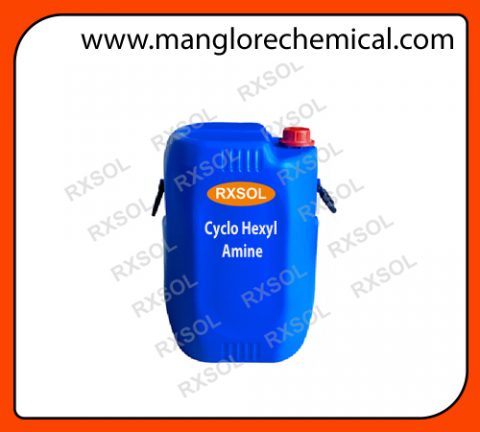


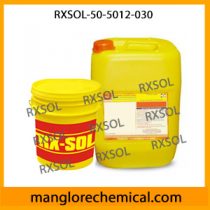
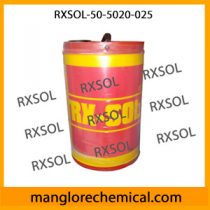
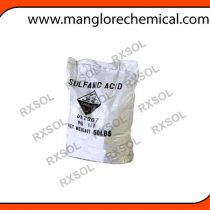
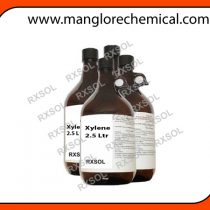
Reviews
There are no reviews yet.